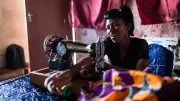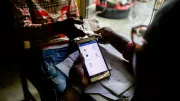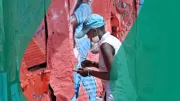Recent Blogs
Blog
How Are Fintechs Tackling the Arab World’s $123B SME Finance Gap?
Small and medium businesses are vital to the Arab world’s economic growth but face a massive financing gap. CGAP finds that only 5% of fintechs offer financing to these businesses today. Here are some that do.Blog
Last-Mile Consumer Finance: Embracing Opportunity, Managing Risk
Last-mile distributors around the world are working to increase low-income households' access to solar systems, cookstoves, water purifiers and other important assets. Many offer financing to customers. How are they managing credit risk?Blog
Does PAYGo Solar Improve Women’s Lives? A Look at the Evidence
Pay-as-you-go (PAYGo) solar financing has electrified the homes of more than 100 million people. What does the available evidence say about its impact on women?Blog
Exploring Innovative Financial Services for Rural Women’s Livelihoods
CGAP's research points to two areas where innovations in financial services can help women with rural and agricultural livelihoods increase their incomes: returns to labor and access to markets.Blog
The Benefits of G2P Choice: Zambia Leads the Way
In 2017, Zambia introduced a government-to-person (G2P) payments model that lets beneficiaries choose the provider they want to use to receive their payment. Today, the benefits to the recipients, providers and government are clear.Blog
COVID-19: A Trigger to Enhance Rural Agent Networks
COVID-19 has highlighted the importance of rural agent networks in reaching people with badly needed assistance. But the crisis has also exposed agents' vulnerabilities.Blog
Opening Pandora’s Box: Revisiting the Impact of Small Business Finance
The debate over the impact of small business finance is far from settled. Here are four gaps in the evidence base that should be filled to move the debate forward.Blog
Flipping the Switch: How Locking Assets Unlocks Credit for the Poor
A new study out of Uganda offers strong evidence that lock-out technology can enable providers to sustainably lend to low-income customers, who may need credit for school fees and other critical expenses.Blog
In Uganda, Solar Home Systems Help Students Stay in School
A pay-as-you-go (PAYGo) solar provider in Uganda is proving that an often-overlooked benefit of PAYGo – financial inclusion – can also affect education outcomes by keeping kids in the classroom.Blog
How Can Funders Promote Interoperable Payments?
Interoperability can make digital payments more convenient and useful for low-income customers. Find out how funders can support the development of interoperable payments systems.Blog
Beyond Access and Usage: Financial Services for Livelihoods
Not only have financial services have changed dramatically over the last 30 years, so have the ways people earn a living.Blog
Comparing India’s UPI and Brazil’s New Instant Payment System, PIX
Many countries are pressing forward with new systems to enable better, faster digital payments. Brazil's instant payment system, PIX, is among the newest and most exciting. How does it compare to India's well-known UPI system?Blog
Let Her Choose: Supercharging G2P for Women
Government-to-person (G2P) programs can reach millions of women. What if instead of requiring women to receive payments from a single provider, they enabled women to select among several options and to reward good service with their business?Blog
Harnessing Fintech in the Arab World: An Opportunity Worth Billions
New research suggests that fintechs in the Arab world could help millions of people and small businesses and generate billions in revenue by serving excluded customers.Blog
How Financial Services Can Help the Poor in the Climate Transition
Early evidence suggests that the financial sector could play a key role in helping low-income people prepare for and participate in climate transition. However, greater coordination among funders and other sector stakeholders is needed.Blog
How Does Tech Make a Difference in Digital Banking?
Digital banks have been innovating faster than traditional banks, and the secret to their ingenuity has a lot to do with the agile business cultures made possible by their modern tech stacks.Blog
What Makes Digital Banking Inclusive?
Just because digital banks can reach low-income customers doesn’t mean that they will. But new evidence suggests that in fact some digital banks are becoming more inclusive and sheds light on how they are reaching low-income customers.Blog
After the Storm: How Microfinance Can Adapt and Thrive
There has been a need for traditional microfinance to face the challenge presented by digital technology for some time. COVID has simply accelerated this process.Blog
The Breaking Point: How Warranties Support Sustainable Asset Finance
Warranties can break down barriers to asset finance for low-income customers. Here's how.Blog



















